After a brief interval for the COVID-19 pandemic, the Tessitura Learning and Community Conference (#TLCC to those in the know) returned to the UK in October 2022 bigger and better than ever.
We were delighted to sponsor the event.
Our studio is filled with light and music.
There are multiple meeting rooms, a well stocked kitchen, and an indoor garden (with fishpond). Talk to us about access needs, environmental factors and any accommodations we might make to enhance your visit. Pop-in for tea and stay to use a spare desk for as long as you need.
11 Greenwich Centre Business Park,
53 Norman Road, Greenwich
London SE10 9QF
We’re next to Greenwich train and DLR station. We have a door right on the concourse but it’s different to our postal address. Find us via: what3words.com/hungry.means.author
This video shows the route to take from the train that will arrive at Greenwich rail station from London Bridge. There's a gentle slope next to the staircase.
If you have to come by car, we have a couple of parking spaces. We have a charging point that you are welcome to use if you have an electric car. Call ahead and we'll make sure the spaces are free. Use our postcode (SE10 9QF) to guide you in.
We’d love to hear from you. Use whichever medium works best for you.
11 Greenwich Centre Business Park,
53 Norman Road, Greenwich
London SE10 9QF
It's exciting to chat about potential new projects. We don't have a ‘sales’ team or a form to fill in. Call us or give us a little detail via email and we'll get straight back to you.
[email protected]If you're a client then you'll be best served by calling us or contacting us via ClickUp, otherwise you can use this dedicated email that reaches all of the digital team.
[email protected]This email hits the inboxes of the people who deal with our bookkeeping and finances.
[email protected]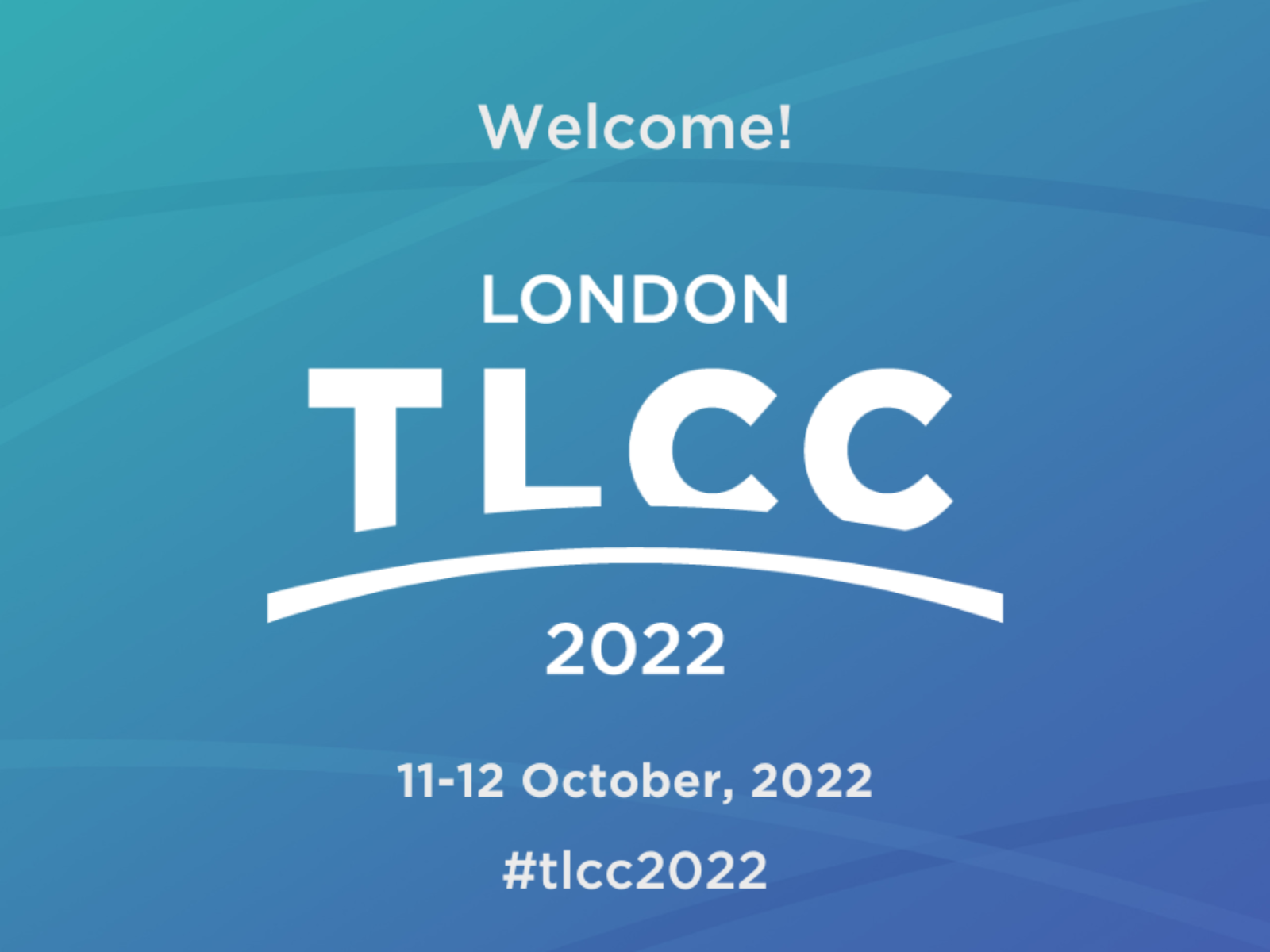
After a brief interval for the COVID-19 pandemic, the Tessitura Learning and Community Conference (#TLCC to those in the know) returned to the UK in October 2022 bigger and better than ever.
We were delighted to sponsor the event.
Alex and Spencer were two of the 474-strong contingent who headed down to talk all things Tessitura, the most notable of which was the release of v16, a brand new version of their flagship software with a host of improvements and new functionality to boot.
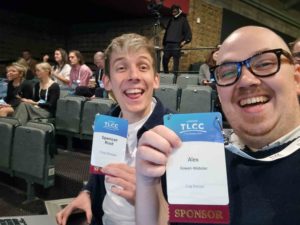
Alex and Spencer at the Tessitura Learning and Community Conference
If you’ve happened upon this blog by chance, Tessitura is an all-singing all-dancing ticketing system designed specifically for arts and culture organisations. Impressive ticketing and customer relationship management (CRM) functionality are their bread and butter, but they also have memberships and analytics built in to create an all in one customer relationship solution.
Innovation was a key theme of this year’s conference, summed up by Tessitura’s Head of Strategy, Erin Lively Koppel as: something that’s both new and useful. That was only one of the definitions of innovation we heard though, we also liked this one The Old Vic’s Sarah Conroy shared:
Innovation isn’t solely represented by new devices, ideas or methods, but also by the process of uncovering new ways to do things. It can also pertain to modifying business models and adapting to changes to achieve better products and services.
What’s clear is that innovation has many definitions, takes different forms, and must be carefully considered in order to have the maximum (and most useful) impact. Here are a few takeaways from the conference:
Rathi Kumar, Operations Director of the Young Vic, was one of the panelists at this year’s aptly named ‘Innovator Series Sessions’. She discussed some innovative ways of working being trialled at the Young Vic, specifically about where creative processes and digital meet. But she was keen to understand what was required first and then work from there to decide on the equipment they required.
She decided on an iterative process, setting up a series of small-scale tests, including one with participants dialling into a rehearsal. Testing out options meant she could understand what was required to make this work for her team, and whether it could work at all before starting to research any equipment they would need.
Iteration was also a key aspect of a talk given by Maria from Malmo Live who had partnered with Will from Substrakt to collaborate on an innovative research and development project. Looking to solve common sector challenges they used a cyclical approach, developing small pieces of work, testing them and learning from how they worked with real users.
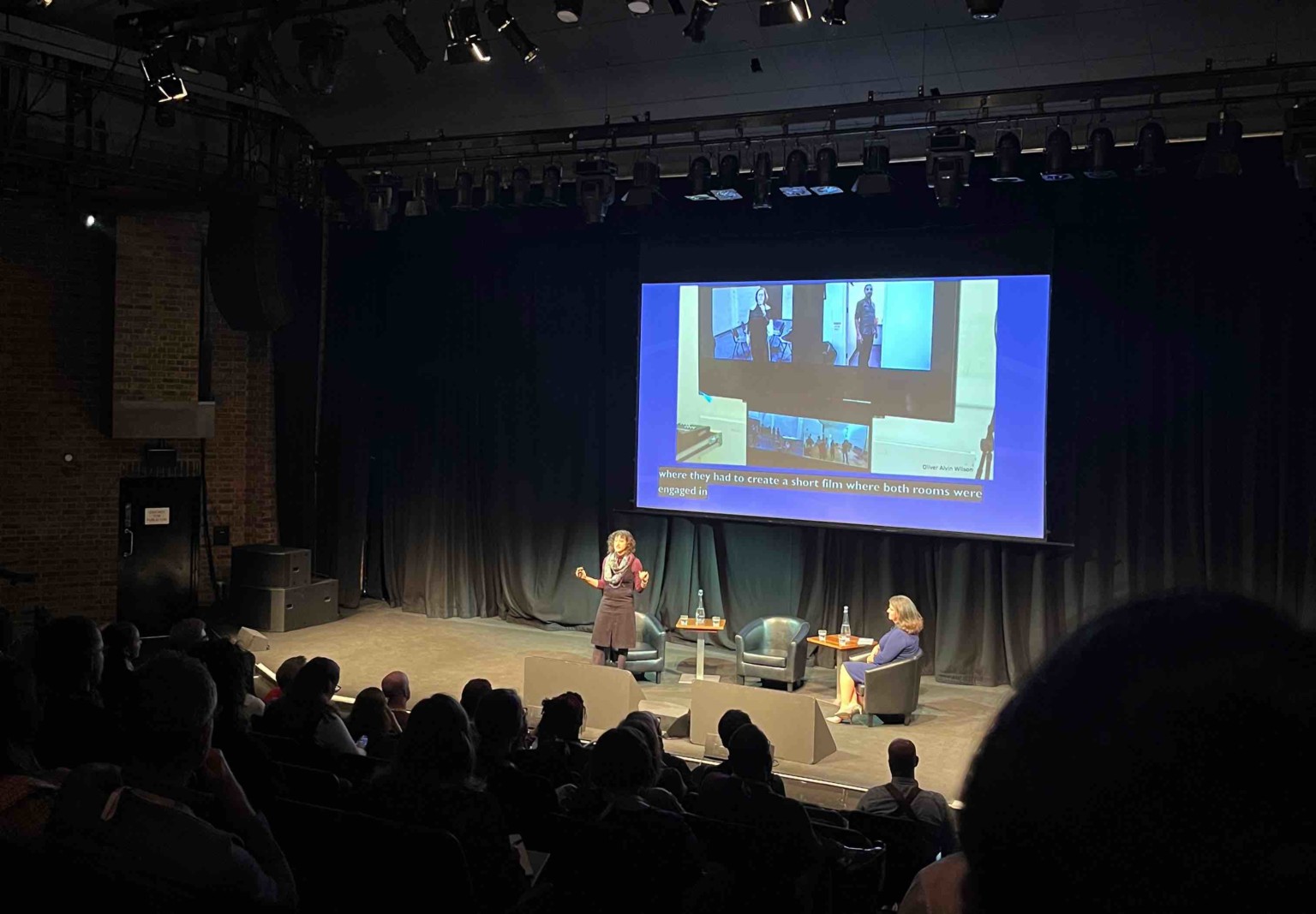 One of the ‘Innovator Series Session’
One of the ‘Innovator Series Session’
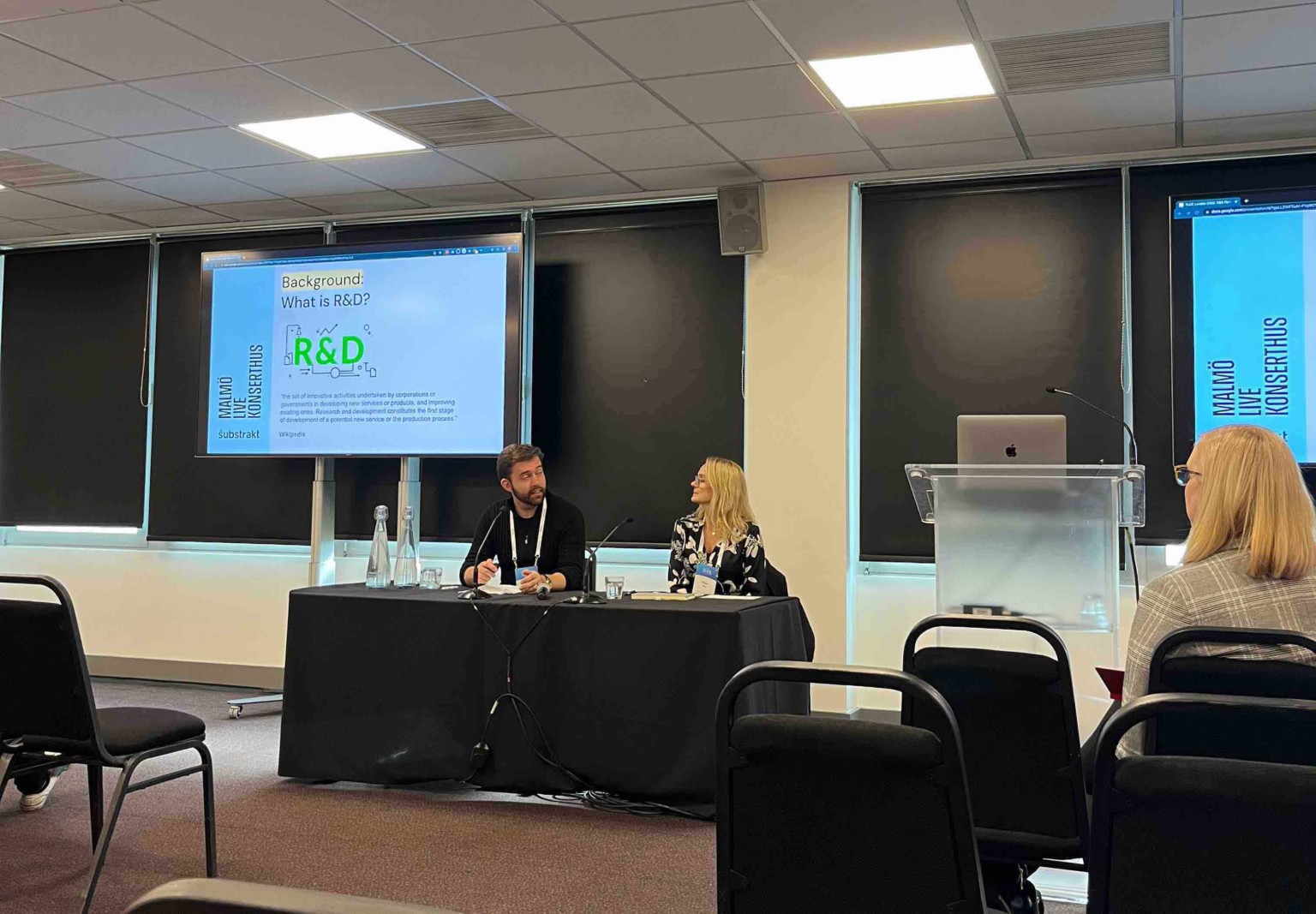 Building a customer-focused solution to common sector challenges
Building a customer-focused solution to common sector challenges
Convenience isn’t the first word that comes to mind when thinking about innovation, but it was for John Jakovich, Chief Innovation Officer for Tessitura. It’s an idea we really loved, epitomised by this quote from him:
Digital transformation is about convenience and removing friction – making things easier. Our experiences over the last few years have shown us that digital convenience is expected, even essential.
He was talking specifically about Tessitura’s new updates, and ensuring that they were convenient for the people using them in arts organisations worldwide. But we loved the idea more generally – it’s a useful blueprint for good innovation. Innovation should strive to make things easier and simpler. Otherwise, what’s the point?
Michaela Drapes, at Made, presented her team’s approach to working with the LA Phil. Tasked with a number of challenges, their partnership resulted in a series of phases of work, one of which was implementing digital ticketing for their three venues, including the 18,000-seat Hollywood Bowl.
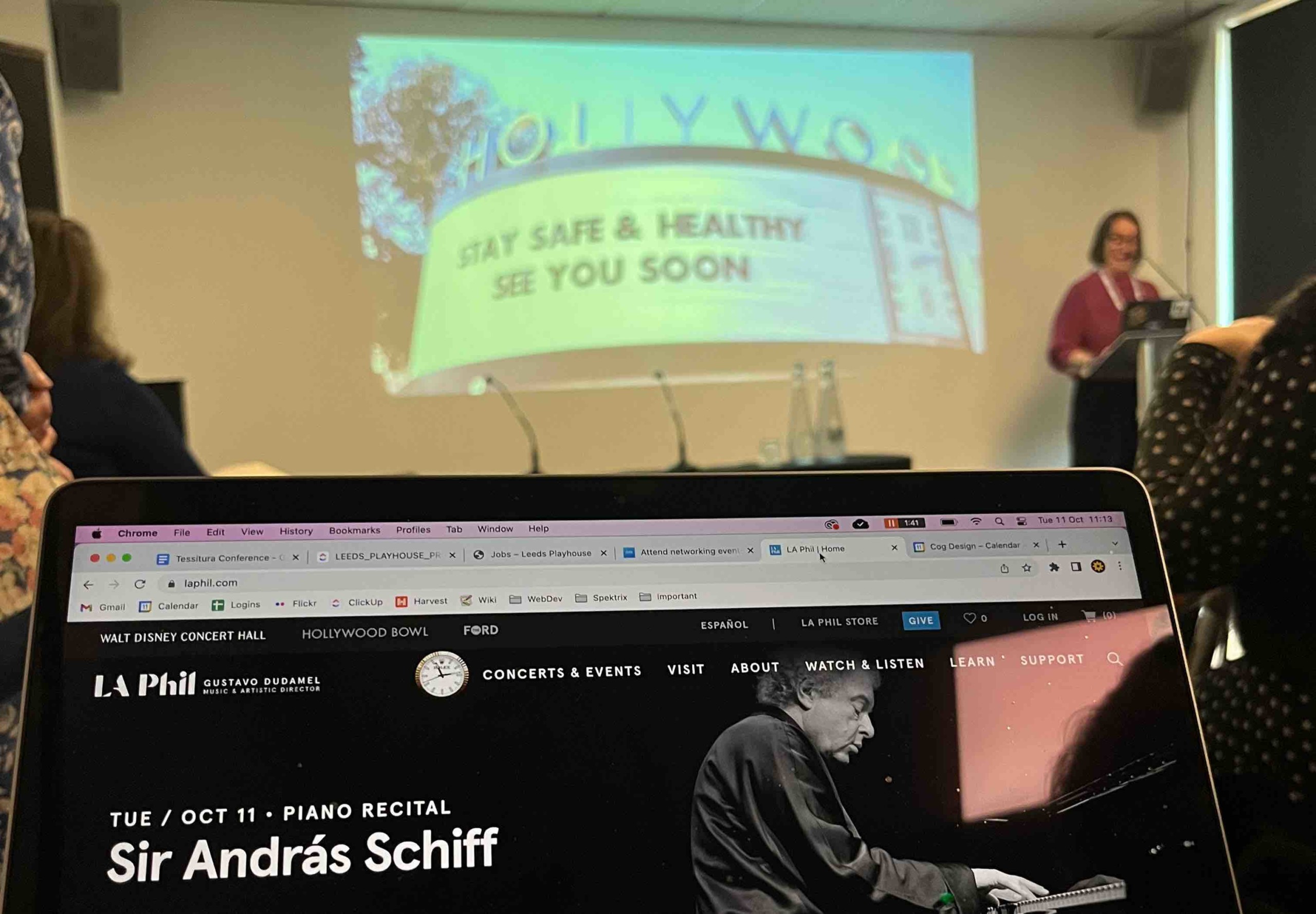
Reimagining the online experience with the LA Phil
Here, innovation was happening at a huge scale. The scale increased both the number of challenges and the issues that became part of the scope of the project. We loved the learnings Michaela shared, about enabling ‘extreme testing’ (testing the solutions deployed for lots of use cases, to ensure it satisfies all needs) and breaking down larger pieces of work into smaller chunks. Doing this enabled the team to fully test each area before rolling them out.
Sarah Conroy, from The Old Vic, stressed the importance of collaboration in the innovation process. She presented a deck she’d appropriately titled ‘Innovate, Cooperate, Educate’. These were the themes that echoed all the way through the project she’d conducted at her venue.
Faced with the challenge of facilitating secure payments for transactions made over the phone during the pandemic, she was forced to implement a new process for The Old Vic: pay-by-link (which we loved learning about through her presentation).
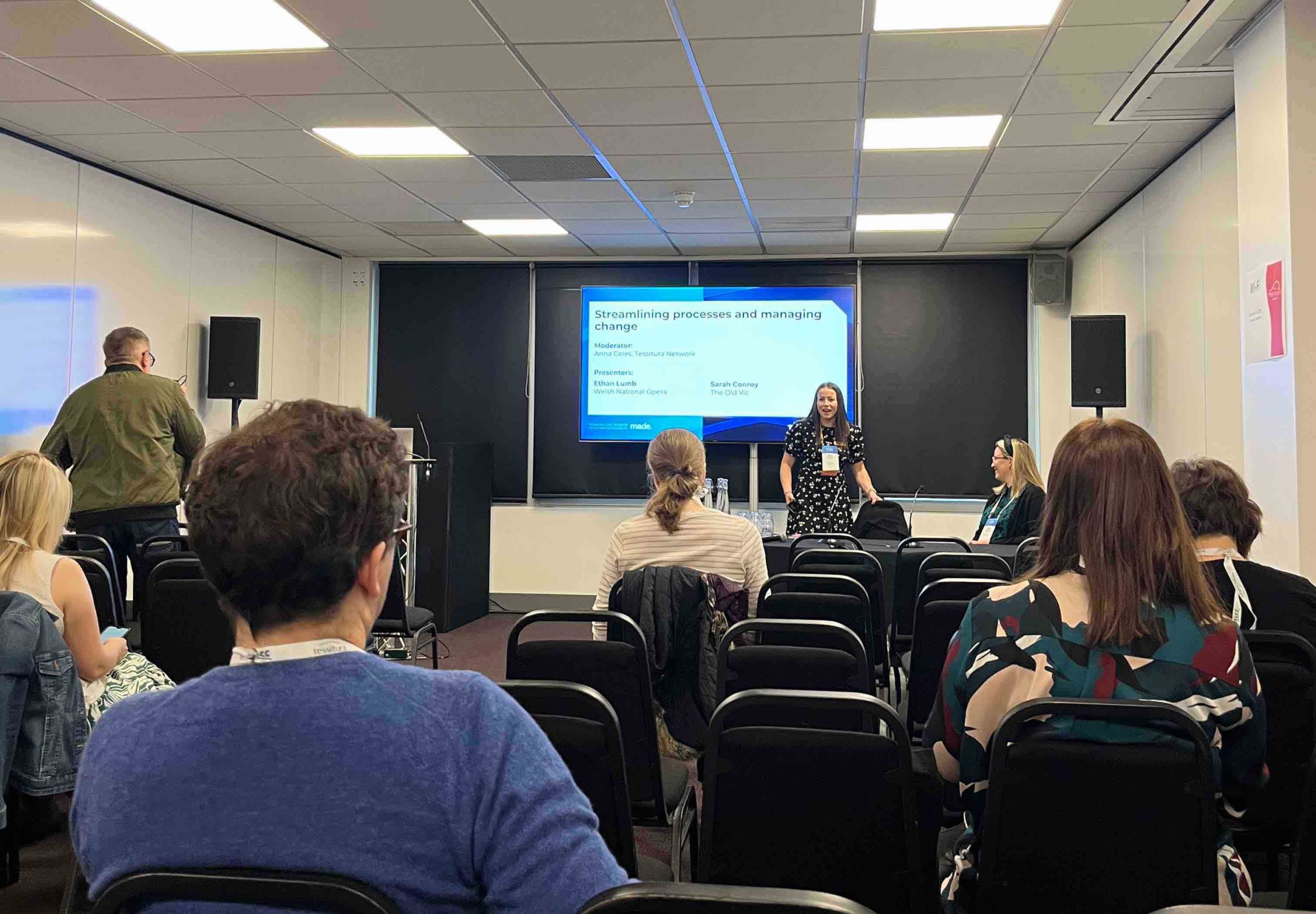
Streamlining processes and managing change
She stressed the importance of getting the buy-in from the affected teams – in this case the box office – right from the get-go. Whilst she was scoping options, she was liaising with them about what they thought and took those into consideration when choosing the best way forward.
We took away this five-step planning process for managing change with others:
We’re strong advocates at Cog of putting inclusivity and accessibility at the heart of our work. So it was great to see three talks focused on both physical access to venue and digital accessibility in order to buy tickets over two short days.
Our friends at Accessible by Design led several sessions spanning whole website accessibility and specific details of booking journey pains all of which led to a healthy discussion among attendees.
Tessitura have worked hard to ensure that the next version of TNEW is WCAG 2.1 AA compliant and it was great to get an insight into the details of the work they did to achieve this.
With contributions from Southbank Centre, Shakespeare’s Globe and many others it was clear that new approaches to ensuring equitable access for all was at the forefront of lots of the innovation seen across the conference.
We left the conference feeling inspired.
We sometimes think of innovation as a ‘big shiny box’ as Matt Kirby from Sadler’s Wells highlighted, it’s important that we realise it’s not just this. He’s working on a project to bring together multiple systems in the same place. It’s a big project and will bring lots of value to the organisation, but it’s not shiny and it doesn’t look like it will cost lots of money.
It reminded me of lots of the ‘digital reliance’ projects we’ve been working on, using Tessitura, for clients such at Gulbenkian Arts Centre, Horniman Museum and Gardens, and English National Ballet.
Innovation does have to be considered, and perhaps it’s important to think about iteration, convenience, collaboration and accessibility.
What is clear, is that innovation doesn’t (always) have to be expensive or flashy.
If any of the takeaways above have inspired you to think about change you’d like to implement in your organisation do get in touch.
We’ve got three decades of experience in helping arts organisations inspire their audiences and are always up for a chat.